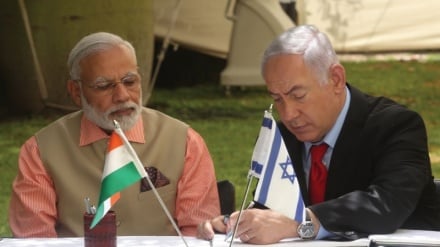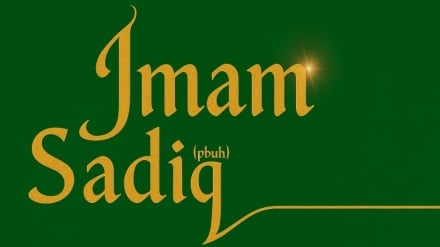Shaikh Kolayni, the Doyen of Imami Scholars
The 19th of the Iranian month of Ordibehesht is marked every year in the Islamic Republic of Iran as National Day for the great Imami scholar Abu Ja'far Mohammad bin Ya’qub bin Ishaq al-Kolayni ar-Razi, who was born in the village of Kolayn near the ancient city of Rayy, presently a suburb of modern day Tehran.
He is the author of the famous book “al-Kafi”, which is a valuable collection of hadith from Prophet Mohammad (blessings of God upon him) as narrated by the Infallible Imams of his blessed household the Ahl al-Bayt.
Born around 260 AH corresponding to around 845 AD, he flourished during the “Ghaybat as-Soghra” or Minor Occultation of the Lord of the Age, the Prophet’s 12th and Last Infallible Heir, Imam Mahdi (may God hasten his reappearance for establishment of the global government of peace, prosperity and justice). He completed his studies in his hometown, and lived for some time in holy Qom, where many of the leading scholars were based, such as Abdullah bin Ja’far Himyari, Ahmad bin Idris Ash’ari, Ali bin Ibrahim bin Hashem, Moḥammad bin Ḥassan as-Ṣaffar and Sa’d bin Abdullah Ash’ari. He also transmitted hadith from a number of scholars in Rayy, including his maternal uncle, Ali bin Mohammad bin Ibrahim Kolayni ar-Razi, known as Allan, the author of Kitab Aḵhbar al-Qa’em on Imam Mahdi (AS).
Kolayni later moved to Baghdad, which in those days was one of the cultural and intellectual capitals of the Islamic world, and frequented the gathering of scholars. He lived during the time of the four Sufara, Nawwab or representatives of Imam Mahdi (AS). Besides teaching, he started writing books, such as the biographical work “Kitab ar-Rejaal”, “ar-Radd ala'l-Qaramata” (or "Refutation of the Carmathians"), “Rasa'el al-A’imma” (or "Letters of the Imams"), and an anthology of poetry about the Imams.
Kolayni’s greatest claim to fame is, however, his monumental work “al-Kāfi” (or “The Sufficient”). It is the oldest of the four canonical books (or “Kotob al-Arbaʿa”) of Hadith of the School of the Prophet’s Ahl al-Bayt. He worked on it for twenty years, completing it in Baghdad. It contains the genuine statement of the Prophet and the Imams handed down to the ummah by the disciples of the Imams. In his introduction, Kolayni maintains that it is incumbent upon the believer to perform the religious duties on the basis of knowledge, certitude and insight. Without these he will remain in a state of doubt.
This knowledge is to be found in the Hadith on the authority of the Infallible Imams, who as the divinely-designated successors of the Prophet have narrated precise and authentic accounts of the teachings, traditions and shari’a of Islam. Kolayni describes his aim as providing a book of such hadith that would include all branches of religious knowledge and would serve as a guide to the believers. Continuing the work of earlier scholars of Qom, Kolayni sifted what he considered reliable from unreliable traditions, retaining only those traditions which he considered to reflect orthodox teaching. “Al-Kafi” is indeed a very full and comprehensive work, divided into three sections, “al-Usul”, “al-Furu” and “ar-Rawdha”.
The “Usul” gives hadith concerning the principles of religion and principles on which religious law is based. The “Furu'” concerns the hadith which elaborate the details of religious law, while the “Rawdha” is a collection of hadith outlining various points of religious interest and including some of the letters and speeches of the Imams. One of the principal features of the work is that the hadith are presented systematically in chapters according to their subject matter.
This is a system which Islamic scholars had begun to use in the second half of the second century and in the third century of the Islamic era. Kolayni was not the first Imami scholar to use the method. There are other works of hadith which use the same method, notably “Kitab al-Mahasin” of Ahmad bin Mohammad bin Khalid al-Barqi who died a half century before him in 274 AH. “Al-Kafi”, however seems to be the first work to present such a comprehensive survey of hadith in this manner.
Over 16,000 hadith are cited in the “al-Kāfi. In virtually all of them the text (or matn) is preceded by an “esnad” or documentary proof. The Kāfi was transmitted by a number of Kolayni’s students. particularly Jaʿfar bin Moḥammad bin Qulawayh, who transmitted all of Kolayni’s works to the celebrated Shaikh Mofid, whence they reached the famous Shaikh at-Ta’efa Ṭousi. Since then numerous commentaries, abridgements, glosses, studies and Persian and Urdu translations have been written on “al-Kafi”. Shaikh Kolayni passed away in Baghdad around 929 AH and was laid to rest in the same city, where his mausoleum is a site of pilgrimage.
AS/SS


